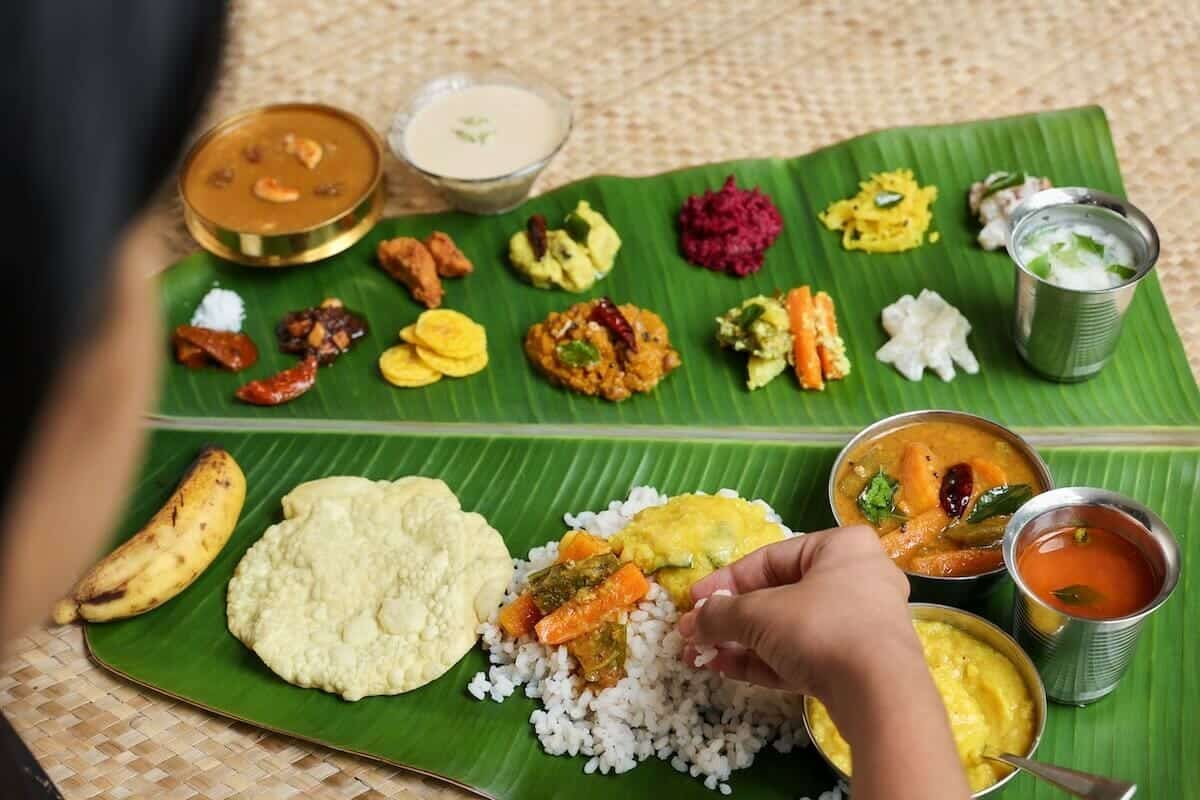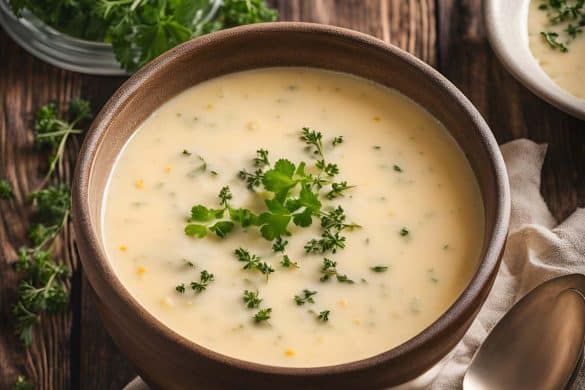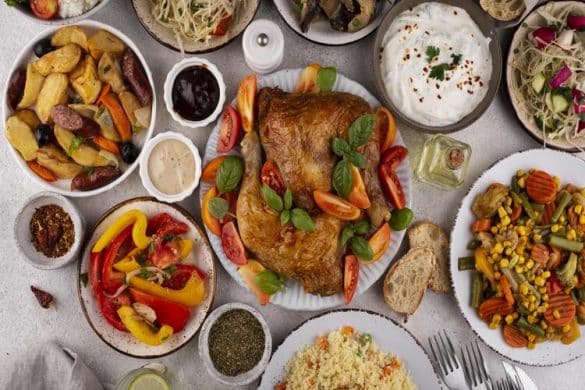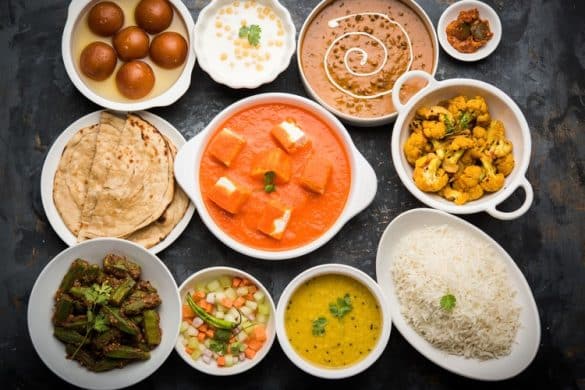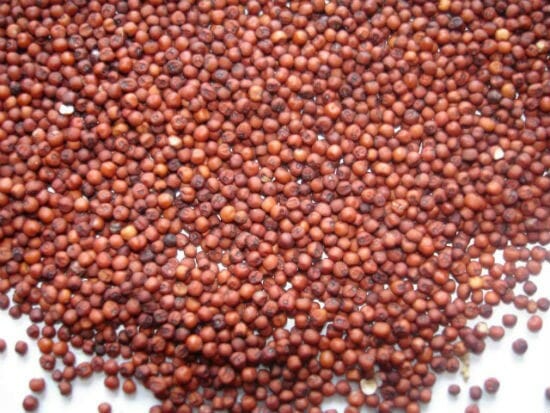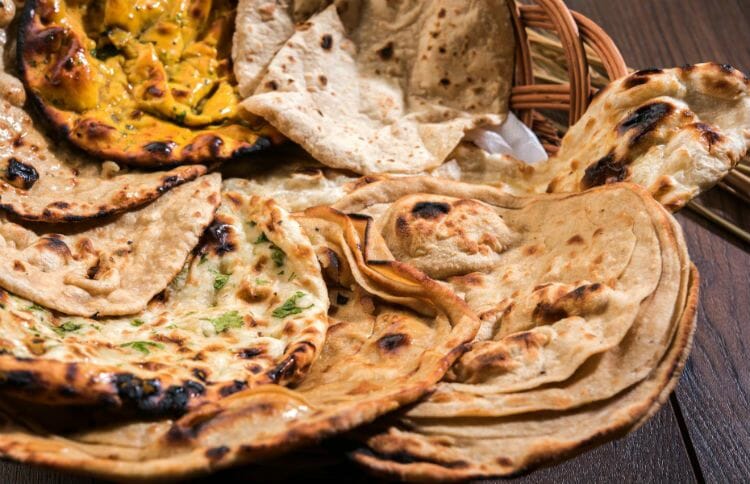Banana leaves are an essential part of a South Indian meal. They provide texture and flavour to the food and serve a much deeper cultural purpose. Eating on banana leaves is more than just a tradition – it’s a way for people in South India to connect with their culture and heritage. So why do South Indians use banana leaves when they eat? This article will explore the history and culture behind this unique dining experience.
South India has long been known for its vibrant and colourful cuisine. From spicy curries to savoury dosas, there is something delicious around every corner. One aspect that makes the region’s cuisine special is eating on banana leaves – an age-old custom that goes back centuries. This traditional practice gives meals served on Banana leaves an extra layer of flavour and is seen as a sign of hospitality throughout southern India.
Eating on banana leaves is so deeply embedded in South Indian culture that many restaurants now offer platters served on them specifically for tourists looking to get a taste of local life! From understanding the health benefits to appreciating how it connects families over generations, let’s take an in-depth look at why South Indians love eating on banana leaves so much.
Overview Of Banana Leaf Eating
Eating on banana leaves is a common practice in South Indian cuisine. Family dinners and large celebrations have been an integral part of the culture for centuries. Not only does eating on banana leaves have nutritional and health benefits, but it also carries great cultural significance within traditional practices.
Banana leaves are used as biodegradable plates for their many advantages, such as being chemical-free, lightweight, and hygienic. They can act as natural food wrappers that help keep food warm while preserving its taste and aroma. They also provide essential vitamins and minerals like zinc, magnesium, potassium, and calcium, which increase when heated with hot food.
The tradition of eating off of banana leaves goes beyond practicality; it holds significant spiritual meaning too. It’s believed that using these leaves brings good luck because they represent growth and fertility– two highly desirable qualities in Hinduism. Furthermore, consuming meals from a communal plate made of one leaf symbolises unity among people who partake in the meal together.
Eating on banana leaves is thus an essential part of South Indian culture, with its physical and spiritual benefits.
Historical And Cultural Significance
Have you ever wondered why South Indian people eat on banana leaves? This age-old custom has a long history and carries great cultural significance. From physical benefits to spiritual ones, let’s explore the historical and cultural reasons behind this unique practice.
Banana leaves have served as plates for centuries in South India. They were used by royalty before becoming adopted into everyday life among commoners. In Hinduism, food is an offering of gratitude to God and eating off these leaves symbolises respect for him due to their natural beauty and symbolism of growth and fertility. Additionally, meals from communal plates made out of one single leaf signify unity among those who partake in it together.
The use of banana leaves also reflects traditional Indian values such as hospitality, generosity, and sharing resources with friends and family members alike. Eating off them reinforces the idea that everyone should be treated equally regardless of social standing or wealth; whether it is a small family gathering or a large celebration, everyone gets their piece of the leaf—a gesture which unites all guests at the table.
Moreover, there are several practical advantages associated with using banana leaves too: they act as light yet durable, biodegradable dishes since they can easily be disposed of after each meal without any negative environmental impact; additionally, because they’re naturally porous when heated up with hot food they provide essential vitamins like zinc, magnesium, potassium, and calcium while preserving its taste and aroma.
From ancient royal feasts to modern-day dinners celebrating special occasions – eating on banana leaves continues to remain an essential part of South Indian culture with many nutritional advantages associated with it. Next, we will look into how these benefits affect daily lives in South India today.
Nutritional Advantages
The use of banana leaves not only carries cultural importance but also gives diners several nutritional benefits. For starters, the leaves are naturally eco-friendly and biodegradable – so there is no need for plastic or paper plates which can be harmful to the environment. In addition, their porous nature means they absorb excess oil and spices from food while retaining their nutrients and flavour. This makes meals cooked on these leaves healthier than typical Indian cuisine as it helps reduce calories consumed during a meal.
Not only that, but eating off banana leaves has been said to aid in digestion due to its natural enzymes, which help break down complex proteins into simpler forms. The vitamins found in these leaves, such as zinc, magnesium, potassium, and calcium, further benefit the digestive system by promoting overall health. Moreover, some studies suggest that consuming foods cooked on banana leaves may even improve immunity levels due to their increased selenium content.
Then, using banana leaves for dining comes with numerous nutritional advantages and important cultural ones. But what practical benefits does this practice provide? Let’s explore how this method of eating impacts daily life in South India today.
Practical Benefits For Dining
Banana leaves are an integral part of the South Indian meal experience, with their practical benefits to daily life being just as significant as the nutritional ones. For instance, in some parts of India, it is estimated that up to 90% of restaurants use banana leaves instead of plates when serving food. This is mainly due to their affordability and convenience – since they require no washing or cleaning after a meal like other tableware. Furthermore, these leaves can be discarded without creating any waste that would otherwise need disposal.
Another advantage of using this type of plate lies in its presentation. Eating from banana leaves adds aesthetic value and makes eating pleasant, given its naturally glossy texture. Moreover, there’s something special about taking meals on a single platter rather than multiple dishes, which helps bring people closer together while dining. The fact that such interactions occur more often in South India could explain why many prefer consuming their meals on banana leaves over traditional dinnerware.
Overall, the use of banana leaves offers numerous functional advantages for day-to-day activities in South India today – making them an ideal choice when dining out or at home. But how exactly do these practices contribute to environmental sustainability? Next, let’s explore what role banana leaf plates play in preserving natural resources in this region.
Environmental Influence Of Eating On Banana Leaves
The environmental influence of eating on banana leaves reaches far beyond convenience and presentation. By reducing the need for plates made from non-biodegradable materials, these practices help to conserve natural resources like water and energy, which would otherwise be used in their production. Moreover, unlike disposable plastic or styrofoam cutlery, banana leaves are 100% biodegradable, meaning they can decompose without causing any harm to the environment – making them an eco-friendly alternative for casual dining.
Finally, consuming meals off this type of plate also helps conserve trees that provide us with oxygen. Since most restaurants now use synthetic alternatives such as paper or foam containers rather than wooden trays, cutting down trees are no longer necessary for serving food in South India. This helps maintain a balance between human activities and nature by preserving its biodiversity while still enjoying our favourite dishes simultaneously!
Banana leaves have thus proven invaluable tools for promoting sustainable living among many communities across South India – thanks to their practicality and ecological benefits combined. But what about their nutritional merits? Let’s examine how eating on these plates could impact our health next.
Health Implications From Eating On Banana Leaves
In addition to being an eco-friendly option, eating on banana leaves has some impressive health benefits. For starters, consuming food off this type of plate reduces the risk of contamination from bacteria and other pathogens since it is naturally naturally antibacterial. Plus, its high magnesium content helps to regulate blood pressure levels while providing a rich source of iron – both essential for maintaining good overall health.
Another advantage is that many people find meals on these plates more enjoyable due to their pleasant smell and taste. This could be attributed to the fact that they are often served warm or slightly steamed – which can enhance the flavour by releasing natural oils found within ingredients like spices and herbs used in traditional South Indian dishes.
Therefore, when eaten regularly with proper care and hygiene, there’s no doubt that meals served on banana leaves deliver great nutritional value and numerous environmental perks! But beyond just physical benefits, it’s essential to remember about preserving traditional practices such as this one that has been passed down through generations.
Preservation Of Traditional Practices
Eating on banana leaves is a centuries-old tradition in South India, and it’s not hard to see why. It’s like an ancient art form, with the vibrant hues of green providing a beautiful canvas for culinary delights. Not only does this practice provide nutritional benefits and help reduce contamination risks, but it also serves as a reminder of cultural identity and heritage.
It has become increasingly clear that preserving traditional practices such as these can benefit us all physically and mentally. This is especially true when we consider how our modern lifestyles have created more stress than ever, leading to more health issues. By keeping traditions alive, people can take comfort in a familiar routine while having access to nutritious meals prepared according to their customs.
The preservation of eating on banana leaves goes far beyond just South Indian culture; its many advantages have been acknowledged around the globe, leading to its growing popularity among those looking for eco-friendly solutions or simply wanting something unique for their next meal!
Growing Popularity Around The World
The growing popularity of eating on banana leaves worldwide has been attributed to its many advantages. Not only does it reduce waste and promote sustainability, but it also helps keep traditional cultures alive. For example, in some parts of India, serving food on a banana leaf is integral to religious ceremonies and regular family gatherings.
Moreover, this practice provides essential health benefits too. According to researchers, consuming whole foods like those served on banana leaves can help improve digestion and absorption of nutrients – particularly beneficial for those with chronic illnesses or allergies. Additionally, since no chemicals are used during preparation, people don’t have to worry about contamination risks, making it safe for even children to enjoy their meals!
Finally, eating on banana leaves is a great way to connect with South Indian cuisine. It’s not just about the aesthetics; each bite carries centuries-old traditions that remind us all how integral culture is when it comes to our everyday lives. Whether you’re looking for something unique or environmentally friendly solution – this old tradition should definitely be at the top of your list!
Connection To South Indian Cuisine
Eating on banana leaves has been integral to South Indian cuisine for centuries. It’s not just about the convenience or health benefits – it also carries a deep cultural significance that makes each bite meaningful. Like a blank canvas, these leafy plates provide the perfect backdrop to showcase some of India’s most beloved dishes. From hearty curries to piquant pickles, one can find various flavour combinations served in this traditional style. Eating from banana leaves is almost like taking a journey through time and culture, connecting us to our ancestral roots while giving us a glimpse into how things used to be done in ancient societies.
But there’s more to eating off banana leaves than meets the eye; they are often associated with critical religious ceremonies too. For example, offering food on them during festivals such as Pongal (a harvest festival) symbolises good fortune and abundance, while sharing meals with others is seen as an act of devotion. Even ordinary family dinners can take on special meaning when served this way – providing nourishment and connection between loved ones.
With its unique combination of practicality, tradition, and spiritual symbolism, there’s no wonder why eating off banana leaves has become so popular around the world! Whether you’re looking for something exotic or want to explore your heritage – it’s worth trying at least once in your lifetime!
Ceremonies And Rituals Involving Eating On Banana Leaves
Eating on banana leaves isn’t just a traditional practice – it also carries an array of symbolic ceremonies and rituals. For instance, in Hindu culture, these leafy plates offer food as part of religious pujas or festivals such as Pongal. This is seen as an offering of gratitude for the harvest season and a prayer for continued abundance into the future.
Furthermore, sharing meals from banana leaves is said to be a sign of respect and even devotion; the act symbolises unity between family members or friends who partake together. It can also signify hospitality – when one invites others over for dinner, serving them off this special plate conveys that they’re being welcomed warmly into their home.
This ritualistic eating has been around for centuries, but its significance still resonates today. Whether you’re looking to explore your cultural heritage or simply searching for something exotic, there’s no denying this age-old tradition holds power in the modern world!
Significance In Modern Times
Today, eating on banana leaves has become more significant in the modern age. With more people becoming environmentally conscious and striving for sustainable practices, this traditional custom is now seen as an eco-friendly alternative to disposable plastics or other single-use items. It’s quickly becoming popular among those who recognise its potential for reducing waste – not to mention that it adds a unique flair to special occasions!
Moreover, these leafy plates provide health benefits, too; studies have shown that when food comes into contact with certain types of plants, like bananas, beneficial compounds can be transferred, aiding digestion and detoxification processes. So if you’re looking for some nutritional value along with your meal – why not try serving off banana leaves?
The beauty of eating on such natural materials also provides an excellent opportunity for connection between friends and family members alike – something we all need during times like these! And while there are certain things to consider before diving into this practice (such as ensuring cleanliness), there’s no denying that using banana leaves offers up a plethora of possibilities. Now let’s explore some considerations when dining off these special plates.
Considerations When Eating On Banana Leaves
As with any dining experience, there are a few things to keep in mind when eating on banana leaves – chief among them being hygiene. It’s crucial to ensure the leaves have been washed properly and are not contaminated by water or other substances. If you’re hosting an event, make sure all guests know how to handle the plates correctly; as such items can be fragile, it may also help to provide spoons and forks for convenience.
Another factor to consider is which types of dishes and ingredients will work best with this form of serving – some cuisines lend themselves more naturally than others. Consider what food would look good presented on a leaf and go from there! Lastly, think about presentation too; adding garnishes like fresh herbs or edible flowers can liven up the plate and give your meal an extra special touch.
Whether you’re looking for a sustainable alternative or want to add something unique to your next dinner party, exploring ways to eat off banana leaves could be just the thing! So why try out this traditional custom today?
Conclusion
Eating on banana leaves is an ancient tradition in South India that has stood the test of time. It is a practice steeped in history and culture, providing nutrition and practical dining benefits. Eating on banana leaves also highlights the importance of respecting nature and its environment. Even today, this custom continues to be celebrated through various ceremonies and rituals as part of traditional South Indian cuisine.
This age-old ritual holds great significance for those who follow it not only for its cultural roots but also for its practicality. By understanding why people eat on banana leaves, we can appreciate the valuable lessons that come with it—from honouring centuries-long traditions to looking out for our planet’s future—and embrace this unique form of eating in all its glory.
Eating on Banana leaves truly puts us in touch with our past while making sure we remain mindful of our present and future at the same time. Let us take a moment to reflect upon this timeless tradition which connects us to our heritage, provides sustenance to diners, takes care of Mother Nature and brings everyone together around the same table over delicious meals enjoyed with family or friends!

